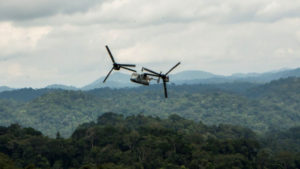
In this week’s column – the mistakes and misconceptions about flying under a public safety COA, as Steve Rhode talks about his recent interview of FAA representative John Meehan.
The following is one of a biweekly series on public safety drone issues by Steve Rhode, Chief Pilot with the Wake Forest Fire Department and the North Carolina Public Safety Drone Academy, and founder of Public Safety Flight, a website dedicated to information about the use of unmanned aircraft systems (UAS), UAVs, aircraft, and drones in public safety. (Not to be contrued as legal advice: please see details at the FAA government site.)
Flying Under a Public Safety COA: What You Must Know
You might have heard that old saying, “what you don’t know can kill you.” While that is true, in the public safety flying world, I think the expression should be “what you assume you know can kill you.”
Flying drones in public safety is a new field with loads of shortcuts to get people in the air. Much of the information pilots hear or learn is from a salesperson, friend, or internet forum.
So it does not surprise me when pilots ask me about situations that are just not within the regulations.
When presented with the facts, the response is often denial that what I’m saying is true because so many other sources have given the impression of a different reality.
In all cases, the ultimate authority of public safety UAS flight is the FAA, and the boundaries of compliant flight are in the Federal Aviation Regulations. It gives all pilots a place to look for the correct answer instead of what new pilot Bob told them he had heard at a conference.
Recently I had the opportunity to have John Meehan from the FAA drone folks on my Public Safety Flight podcast. We spent almost an hour and a half just scratching the surface of one topic – public safety COA flight.
You can listen to the podcast here.
John is a wealth of knowledge and regularly helps departments to deal with the incredibly complex world of flying under a Certificate of Waiver or Authorization (COA).
John shared the history of the COA and how it came about following the Vietnam war to allow all the helicopters coming back to be used in public aircraft operation by very experienced and highly trained military pilots.
I found that fascinating. It explained how we wound up with such loose oversight by the FAA when running a professional commercial flight operation essentially under a COA. No wonder the modern COA is a minefield.
That part of the discussion alone is worth the investment in time to listen to the entire podcast, even if you don’t usually listen to podcasts.
More key points we talked about that all public safety pilots need to be aware of are:
Training flights are not allowed under the COA. All training flights and other non-Public Aircraft Operations (PAO) would have to be flown under a Part 107 Remote Pilot certificate held by the pilot.
Beyond Visual Line of Sight (BVLOS) flight is often misunderstood by departments flying under a COA. A common misperception is aircraft can fly beyond sight, but the reality is it can only fly beyond the visual line of sight of the pilot but not the required Visual Observer (VO).
Well-intentioned pilots commonly misunderstand even the new Tactical BVLOS that is only to be requested in imminent danger to life and still requires a VO to observe the aircraft at all times visually.
We talked at length about all of the hidden or unknown issues that trip up COA pilots. We looked into why even the non-pilot on the COA, known as the responsible person, can be found legally accountable for non-compliant flight by the department.
But the accountability extends down to the pilot flying the aircraft. No department can shield the pilot from fines, penalties, and legal action from the FAA or other aviation regulators.
This podcast page has a transcript of the entire interview if you want to read it.
All pilots flying under a COA and all departments that hold a COA for public safety drone flight should listen to the entire podcast and hear what John has to say. You owe it to yourself and your department.